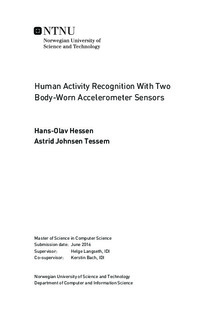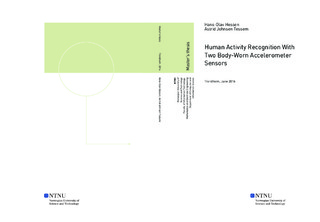| dc.description.abstract | Data used in studies about physical activity is primarily collected from questionnaires and other subjective methods, which may lead to biased and inaccurate data. As subjective data collection methods have shown to be unreliable, enhancing or even replacing these methods with objective methods like the use of wearable technology and human activity recognition (HAR) systems, will lead to more accurate data. HAR systems are systems that can recognize what kind of activity a subject is performing based on the monitoring of data streams from sensors on, or close to, the subject. One way this can be achieved is by constructing a classification system that can recognize human activities from body-worn sensor readings.
HUNT4 is an upcoming health study with about 60000 participants that will make use of objective measurements of their participants' physical activity to provide precise summaries about each participant's activity level. To be able to create these summaries, there is a need for a system that can recognize physical activities based on sensor readings. The main objective of our research is to design and construct such a HAR system.
In this thesis, we have reviewed related work performed in the field of HAR, and identified potentials for further improvements of current HAR systems. We experimented with deep learning, semi-supervised learning, dynamic classification and dynamic windowing. Through an iterative process of adding and removing components, we propose a system that is able to distinguish between daily activities with a high level of precision. The final HAR system consists of a Convolutional Neural Network followed by a Hidden Markov model, reaching an accuracy for classifying activities of 97.9% for adults and 96.6% for adolescents. | |

